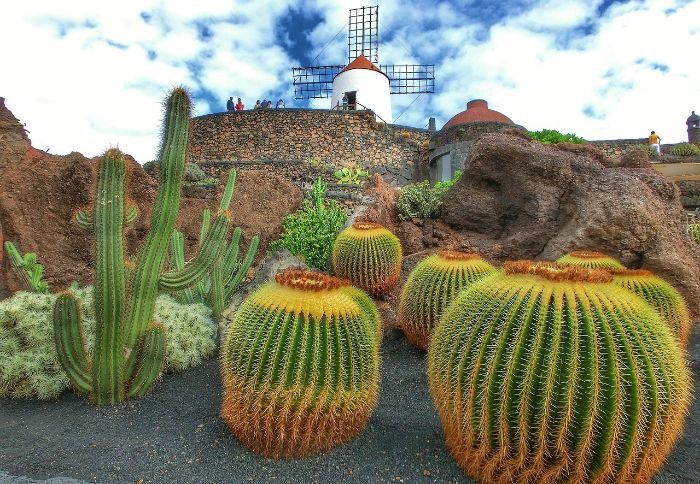Selecting plants that handle prolonged heat protects bloom cycles, foliage quality, and water use. Match each choice to USDA zone, sun exposure in measured hours, and soil drainage. Favor species with deep or fibrous roots, reflective or narrow leaves, and proven drought tolerance. Stabilize beds with 2-3 inches of mulch, deliver deep irrigation on a timed drip line, and add temporary shade during heat waves. That setup keeps growth steady when temperatures climb.
Key Takeaways:
- Measure daily sun hours and match plant labels, placing heat‑set bloomers and reflective‑foliage shrubs in the hottest spots.
- Filter selections by USDA zone and drainage to avoid heat stress and favor plants that continue bud formation on warm nights.
- Prioritize traits that resist heat – deep or fibrous roots, and silver, narrow, waxy, or succulent leaves.
- Use deep, infrequent drip cycles and verify moisture at 4-6 inches with a probe, adding a split second cycle during heat waves.
- Design microclimates by grouping plants by water need, preserving airflow, adding wind buffers, and using pale gravel near walls to cut radiant load.
Table of Contents
How to Identify Plants That Withstand Summer Heat
Gardeners can pick winners at the nursery by reading a few reliable cues. Strong performers in hot months usually pair deep or fibrous roots with foliage that reflects light or limits water loss. I run a quick visual checklist before buying and confirm that care requirements match USDA zone, sun hours, and drainage.
Root Systems That Hold Up in High Temperatures
Deep roots stabilize growth when surface soil dries out. Taprooted perennials such as coneflower (Echinacea) and salvias draw moisture from well below the sun-heated layer. Fibrous root systems in lantana and many ornamental grasses spread through large soil volumes and rebound quickly after heat spikes. I prefer plants grown in deeper nursery containers, because elongated root plugs transplant with minimal disturbance and anchor faster. During the first 6-8 weeks, I water two or three times per week, then taper to one deep soak once roots reach 4-6 inches. A light surface covering can help retain moisture in the early stages, provided the base area remains open for airflow.
Foliage Clues That Predict Heat Performance
Leaf traits reveal how a plant handles sun load. Silver or gray foliage reflects light; lavender and artemisia are classic examples. Narrow or needle-like leaves reduce surface area; rosemary and juniper hold form when air temperatures rise. Leathery or waxy leaves slow water loss; oleander and many evergreen shrubs use that trait well. Succulent leaves in portulaca store water and ride out midday stress with minimal wilt. I scan for any of those features first, because they correlate strongly with summer stamina.
Woody Framework and Durable Crowns
Woody stems store carbohydrates and water, which supports recovery after hot, dry periods. Shrubs such as boxwood, spirea, oleander, and bougainvillea maintain structure without frequent pruning once established. Herbaceous perennials that carry thick crowns, such as daylily and sedum, rebound quickly after a short drought. I avoid burying crowns under mulch; a small air gap limits fungal pressure in long, hot stretches. Mediterranean shrubs benefit from a top layer of gravel rather than bark, which keeps bases dry and reflective.
Blooming Behavior During Prolonged Heat
Some plants continue to set buds through heat waves, while others stall until cooler nights return. Reliable summer bloomers include lantana, vinca (Catharanthus), zinnia from the ‘Profusion’ and ‘Zahara’ series, cosmos, and gaillardia. Deadheading is optional for many modern cultivars, although removing full seed heads on coneflower or rudbeckia can redirect energy into fresh stalks. I prioritize varieties advertised for “heat-set” flowering, since that phrase signals breeding for high-temperature bud formation.
Container and Bed Choices That Reduce Heat Stress
Large, light-colored containers buffer root temperatures more effectively than smaller, darker ones. A gritty, free-draining mix with pine bark or perlite keeps oxygen available and prevents midday slump. In beds, elevate planting areas by 4-6 inches in slow-draining soils and install drip tubing beneath ground cover for deep, infrequent cycles. For newly set plants, temporary sun-filtering measures help reduce stress without interrupting growth.
Quick Cue Table for Fast Nursery Decisions
| Trait to Check | What to Look For | Heat Advantage | Example Plants |
|---|---|---|---|
| Roots | Deep container plug, firm root mass without circling | Faster establishment and deeper moisture access | Echinacea, Salvias, ornamental grasses |
| Foliage | Silver, narrow, waxy, or succulent leaves | Lower leaf temperature and slower water loss | Lavender, rosemary, oleander, portulaca |
| Framework | Woody stems or thick crowns | Stable structure and quicker recovery after stress | Lantana, spirea, daylily, sedum |
| Blooming | Labeled for “heat-set” flowering | Buds form during hot nights and days | Lantana, vinca, zinnia ‘Profusion’ |
A short, repeatable inspection routine turns plant shopping into a low-risk choice for hot summers. With traits verified at the pot and care tuned for deep watering and clean crowns, the garden keeps color and foliage quality through peak heat.
Heat-Tolerant Plant Recommendations by Category
A well-balanced garden for hot summers blends structural permanence with seasonal color. Selecting species within each growth category (perennials, annuals, and shrubs) supports year-round resilience and reduces replacement cycles. Placement by sun exposure and soil type maximizes performance under high temperatures.
Perennials for Sustained Summer Performance
- Echinacea (Coneflower) – Best suited to full sun with at least six hours of direct light. Thrives in loamy or sandy soil with moderate drainage. Its taproot system reaches deeper moisture, sustaining blooms through prolonged heat. Ideal for USDA Zones 3-9.
- Gaillardia (Blanket Flower) – Performs well in lean, sandy soils and open sun. Continuous flowering occurs even during heat waves. Requires minimal irrigation after establishment, making it suitable for low-water landscapes.
- Salvia nemorosa (Woodland Sage) – Prefers full sun but tolerates light afternoon shade in hotter zones. Flourishes in loam or sandy loam with moderate fertility. Stems remain upright in heat, and deadheading prolongs bloom cycles.
Annuals That Hold Color in Extreme Heat
- Zinnia ‘Profusion’ Series – Developed for high-heat flowering, with full sun requirement and adaptability to loamy or sandy soils. Produces steady blooms without mildew susceptibility common in older varieties.
- Portulaca grandiflora (Moss Rose) – Best in sandy or rocky, fast-draining soils and full sun exposure. Succulent foliage minimizes water loss, maintaining turgor even in midday heat.
- Vinca (Catharanthus roseus) – Handles reflected heat from pavement or walls. Prefers full sun to partial shade and well-drained soils. Flower production remains steady with minimal feeding.
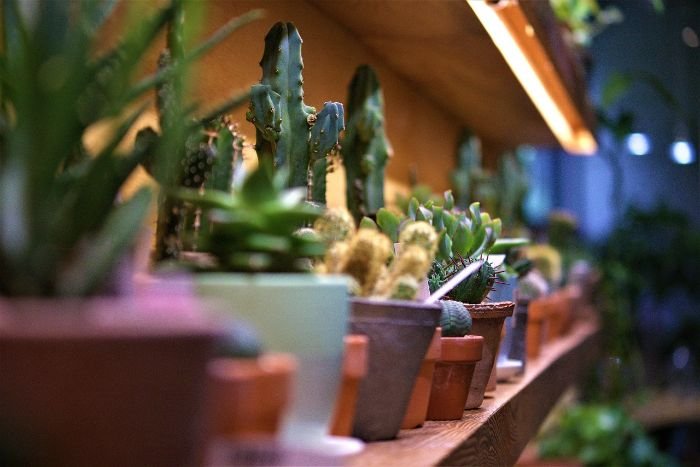
Shrubs That Anchor Hot-Climate Gardens
- Lantana camara – Full sun plant adaptable to sandy or clay loam soils with good drainage. Provides consistent color through summer and tolerates brief drought cycles. Attracts pollinators without needing high maintenance.
- Bougainvillea spp. – Requires full sun and sharply drained soil. Performs best when soil is allowed to dry between waterings. Strongly suited to USDA Zones 9-11; can be container-grown in cooler climates.
- Oleander (Nerium oleander) – Full sun shrub tolerant of poor soils and salt exposure. Once established, survives with minimal supplemental water. Use caution due to plant toxicity.
Placement Table for Optimal Heat Resilience
| Plant Type | Sun Hours | Preferred Soil | Heat Advantage | USDA Zones |
|---|---|---|---|---|
| Echinacea | 6+ | Loam/Sandy | Deep taproot draws moisture | 3-9 |
| Gaillardia | 6+ | Sandy | Thrives in lean soils, continuous bloom | 3-10 |
| Salvia | 6+ | Loam/Sandy Loam | Upright stems, extended flowering | 4-9 |
| Zinnia | 6+ | Loam/Sandy | Heat-set blooms, mildew resistance | 3-9 |
| Portulaca | 6+ | Sandy/Rocky | Succulent leaves reduce water loss | 2-11 |
| Vinca | 4-6+ | Well-drained | Handles reflected heat | 4-11 |
| Lantana | 6+ | Sandy/Clay Loam | Steady summer color | 8-11 |
| Bougainvillea | 6+ | Fast-draining | Dry-cycle tolerant | 9-11 |
| Oleander | 6+ | Various | Tolerates poor soils, low water | 8-11 |
Selecting species by both category and site condition creates a layered planting plan that remains stable through seasonal heat extremes. Proper placement reduces stress on plants, allowing them to maintain bloom production and foliage quality without high-maintenance intervention.
Designing a Layout for Heat-Resilient Gardens
A garden built for high summer temperatures relies on spatial planning as much as plant choice. Grouping species with similar water and sun requirements prevents uneven stress and simplifies maintenance. Incorporating shading structures, airflow management, and surface treatments helps moderate temperature extremes at the root and foliage level.
Zoning by Water and Sun Requirements
Dividing planting areas into irrigation zones based on plant needs avoids overwatering drought-tolerant species and underwatering higher-demand plants. Full sun plants such as lantana, bougainvillea, and gaillardia belong in the most exposed beds. Species that prefer partial shade, including vinca and certain salvias, perform better in locations shielded from intense afternoon sun. Placing plants by measured daily sun hours ensures they receive optimal light without unnecessary stress.
Incorporating Shade Elements Without Blocking Airflow
Permanent shade from trees, pergolas, or lattice screens can lower midday temperatures by several degrees, extending bloom life and preventing leaf scorch. However, airflow must remain unobstructed to reduce humidity buildup, which can invite fungal issues. Position shade structures to block the strongest sun angles (typically from the southwest in most US climates) while allowing prevailing breezes to move through.
Surface Treatments to Moderate Soil Temperatures
Surface materials influence soil temperature and moisture retention. Shredded bark suits moisture-loving perennials and shrubs, while gravel reflects heat away from species adapted to drier conditions. Lighter-colored stone in high-heat zones further reduces radiant heat and keeps root zones cooler.
Windbreaks for Moisture Retention
Hot, dry winds accelerate evapotranspiration and can quickly wilt unprotected plants. Staggered shrub rows or low, dense hedges act as wind filters, slowing air movement without creating a complete barrier. Positioning windbreaks along exposed property edges protects both in-ground beds and container plantings, reducing the frequency of irrigation during heat spells.
Example Layout for a 20×30 ft Heat-Resilient Garden
| Zone | Sun Exposure | Watering Frequency | Plant Examples | Modifications |
|---|---|---|---|---|
| 1 – Full Sun, Low Water | 6+ hrs | 1 deep soak/week | Lantana, Bougainvillea, Portulaca | Gravel mulch, reflective edging |
| 2 – Full Sun, Moderate Water | 6+ hrs | 2 soaks/week | Echinacea, Gaillardia, Zinnia | Bark mulch, drip line |
| 3 – Partial Shade, Moderate Water | 4-6 hrs | 2 soaks/week | Vinca, Salvia, Daylily | Overhead lattice, bark mulch |
| 4 – Wind Buffer | Variable | Matches zone behind | Oleander, Spirea | Staggered hedge layout |
A well-structured layout allows plants to thrive in their ideal microclimate while reducing the overall demand for water and care. By pairing heat-tolerant plant categories with appropriate zones, the garden maintains vitality through the hottest part of the year without constant adjustments.
Care and Water Strategy for Extreme Summer Heat
Heat waves stress roots first. A garden holds color and foliage quality when roots stay cool, moisture reaches 4-6 inches deep, and new growth is not forced during hot spells. Set irrigation by soil type, stabilize temperatures with mulch, and adjust pruning and feeding to avoid stress.
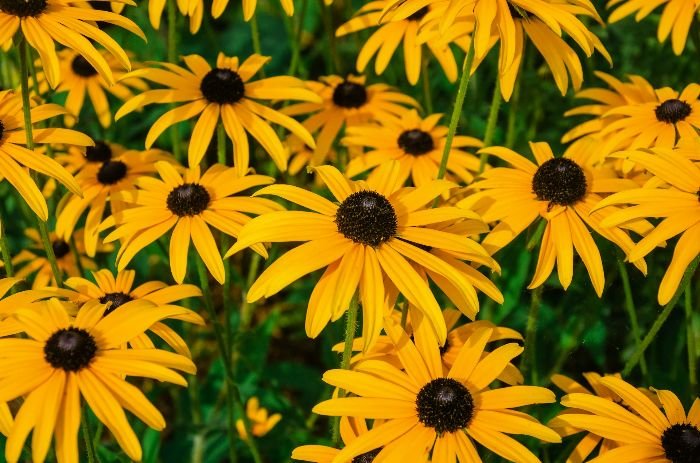
Irrigation Tuning by Soil and Plant Type
Deep, infrequent watering builds resilience in plants that withstand heat. Use pressure-compensating drip with a 20 psi regulator and a filter. Place emitters at the root zone, then verify depth with a soil probe or a long screwdriver.
- Sandy soils drain fast. Run shorter cycles more often and aim for 0.75-1 inch of water per week after establishment.
- Loam holds moisture predictably. One deep soak per week is a good baseline for drought‑tolerant beds.
- Clay drains slowly. Use cycle‑and‑soak to prevent runoff and allow infiltration.
| Planting Zone | Soil | Emitter rate | Heat‑wave schedule | Checkpoint |
|---|---|---|---|---|
| Drought‑tolerant perennials | Sandy/loamy | 0.5-1.0 gph | Two cycles per week, each 30-45 min | Moisture at 4-6 in. next morning |
| Mixed borders | Loam | 0.5-1.0 gph | One deep soak plus a short top‑up | No surface pooling during run |
| Foundation shrubs | Loam/clay | 1.0-2.0 gph | One deep soak; add a second in a heat dome | Moisture at 6-8 in. with probe |
Skip irrigation when a simple rain gauge shows at least 0.75 inch in the past 48 hours. Move drip rings outward as shrubs mature to match the expanding root zone.
Mulch and Soil Temperature Management
Hold mulch at 2-3 inches to slow evaporation and buffer heat. Keep a clear collar of 2-3 inches around crowns and trunks to prevent rot. Use shredded bark around perennials and shrubs that prefer moderate moisture. Use gravel around lavender, rosemary, and other Mediterranean species to keep bases dry and reflective. A basic soil thermometer helps verify results. Temperatures under 90°F at 2 inches depth indicate adequate protection during peak afternoons.
Feeding and Pruning During Hot Spells
High nitrogen during heat pushes soft growth that wilts fast. Pause fertilizing when daytime highs stay above 90°F for multiple days. Resume with slow‑release products once nights cool. Limit pruning to dead or crossing wood so canopies keep shade on roots. Deadhead by removing spent stalks rather than pinching individual blooms to save time and keep energy in new buds.
A garden managed with measured irrigation, temperature buffering, and restrained summer maintenance holds steady through heat waves.
Heat‑Tolerant Plant Selection by USDA Zone
Heat patterns differ by region, so plant choice should follow zone‑specific summer stress. Match species to the length of hot spells, typical night temperatures, and soil drainage. Gardeners gain reliability when plant lists reflect local extremes rather than generic “full sun” labels. The goal is simple: consistent bloom and clean foliage during peak heat with minimal rescue work.
Zones 3-5 – Short Heat Spikes, Cool Nights
Northern gardens still face bursts above 90°F, yet night cooling helps recovery. Favor perennials and shrubs that keep form after a few hot days and return strong after thunderstorms.
- Perennials – Echinacea, Rudbeckia, Nepeta, Salvia nemorosa, Hylotelephium (upright sedum).
- Shrubs – Spiraea japonica, Potentilla fruticosa, compact Juniperus selections.
- Annuals – Zinnia ‘Profusion’ or ‘Zahara’, Cosmos bipinnatus, cold‑zone use of Vinca as an annual.
Placement and care – Aim for 6+ sun hours on free‑draining loam or sandy loam. Water to 4-6 inches depth once per week after establishment, then add one short top-up during multi-day heat. Space plants by mature width to hold airflow and avoid post‑storm foliar disease.
Zones 6-8 – Extended Heat, Intermittent Humidity
Mid‑country and much of the East and South see long runs of hot days with variable humidity. Choose species that keep buds forming when nights stay warm.
- Perennials – Gaillardia, Daylily (Hemerocallis), Perovskia atriplicifolia, Salvia greggii, Catmint (Nepeta x faassenii).
- Shrubs – Vitex agnus‑castus, Lagerstroemia (crape myrtle), Spiraea, Indian hawthorn in milder pockets.
- Annuals – Vinca (Catharanthus), Zinnia heat‑set series, Portulaca for reflected heat near paving.
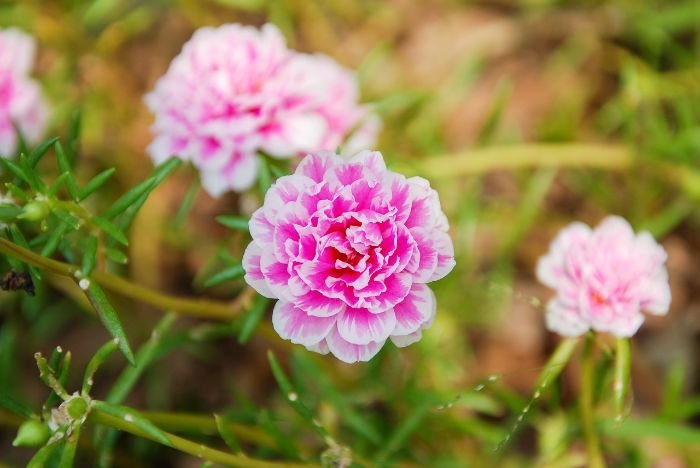
Placement and care – Full sun for 6-8 hours on loam or sandy loam with steady drainage. Use one deep weekly soak as a baseline; during a heat dome add a second shorter cycle. Keep fertilizer light in peak heat to avoid soft growth that collapses at midday.
Zones 9-11 – Prolonged Heat, Warm Nights
Southern and arid regions experience hot days and minimal night relief. Prioritize woody structure, reflective foliage, and dry‑cycle tolerance.
- Perennials and accents – Hesperaloe parviflora, Bulbine frutescens, Gaura lindheimeri, ornamental grasses for movement and glare handling.
- Shrubs and large accents – Lantana camara, Leucophyllum frutescens (Texas sage), Tecoma stans, Bougainvillea, Nerium oleander, Plumbago auriculata.
- Annuals – Vinca for continuous bloom; Celosia and Gomphrena where humidity stays high.
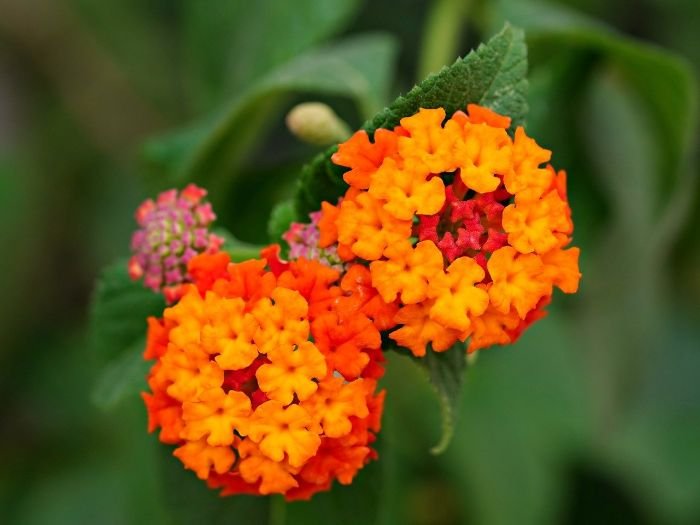
Placement and care – Full sun exposure with fast drainage on sandy or gravelly soils. Irrigate deeply every 7–10 days after establishment, then verify moisture at 4–6 inches with a probe. Use pale, reflective surface materials around Mediterranean and desert species to keep crown zones dry.
Zone‑Based Quick Reference
| USDA Zone Band | Summer Heat Pattern | Reliable Choices | Sun Target | Soil Notes | Water Baseline* |
|---|---|---|---|---|---|
| 3-5 | Short spikes, cool nights | Echinacea, Rudbeckia, Spiraea, Zinnia | 6+ hrs | Loam or sandy loam, good runoff | 1 deep soak weekly; add 1 short top‑up in heat |
| 6-8 | Long hot runs, variable humidity | Gaillardia, Daylily, Perovskia, Vitex, Vinca | 6-8 hrs | Loam/sandy loam, avoid compaction | 1 deep soak weekly; second cycle during heat dome |
| 9-11 | Prolonged heat, warm nights | Lantana, Texas sage, Tecoma, Bougainvillea, Vinca | 6+ hrs | Fast‑draining sandy or gravelly soils | Deep soak every 7-10 days after establishment |
*Adjust for rainfall measured on site.
A zone-tuned list removes uncertainty and raises success rates for plants that withstand heat. Add exact sun‑hour mapping and soil drainage checks before purchase, and selection begins to match real garden conditions rather than catalog promises.
Conclusion – Plant for Heat, Design for Stability
Summer success comes from precise selection and disciplined setup. Map sun hours, confirm USDA zone, and test drainage before purchase. Choose plants that withstand heat with traits that limit water loss or draw moisture from deeper layers. Place each species where light, soil, and airflow match its needs so growth continues when temperatures rise.
Water strategy matters as much as plant choice. Deliver fewer, deeper cycles that reach the active root zone, then verify depth with a probe rather than guessing by surface appearance. Stabilize root temperatures with appropriate surface coverings and avoid crowding that traps humidity around foliage. Pause high‑nitrogen feeding during extended heat and keep pruning light to preserve shade over soil.
Long‑term reliability comes from structure. Anchor beds with shrubs that hold form through warm nights, thread heat‑set annuals for color, and rely on perennials with durable crowns or taproots for recovery after hot, dry spells. Containers near reflective hardscape need larger volume, light finishes, and free‑draining mixes to prevent midday slump.
Progress can be incremental. Replace one underperformer per season with a proven heat performer for your zone, widen irrigation rings as shrubs mature, and record run times that kept leaves clean during the last heat wave. A garden built on zone‑matched choices, measured watering, and clean airflow keeps color and foliage quality through peak summer without constant rescue work.
FAQ
How should I set irrigation during a heat wave without overwatering?
Run drip before 9 a.m. and split watering into two shorter cycles with a 30-60 minute pause to improve infiltration. Increase total run time by about 20-30% when night lows stay above 75°F. Verify success with a probe or long screwdriver that slides to 4-6 inches in moist soil within an hour after watering. Subtract rainfall measured in a simple gauge and reset to the baseline schedule once highs normalize.
What is the fastest way to help leaves after sun scorch?
Give a deep soak at the root zone and move portable shade for 48 hours to reduce further stress. Trim only tissue that is fully brown and dry; leave any green margins to fuel recovery. Hold fertilizer for a week, then resume light care once new buds form. Check for reflected heat from walls or stone and shift containers a few inches away to cut radiant exposure.
Which container setup keeps roots cooler on patios with reflected heat?
Choose light‑colored pots of at least 14-16 inches in diameter and double-pot a nursery container inside a decorative sleeve to create an insulating air gap. Fill with a soilless mix built from roughly 50% pine bark, 30% peat or coir, and 20% perlite for drainage and oxygen. Add a simple drip line on a timer and finish with about 1 inch of gravel on top to slow evaporation.
How do I pick groundcovers that handle heat and cut watering needs?
Match sun and soil first. In full sun with fast drainage, use Delosperma, Sedum spurium, or creeping thyme. In light shade, use dwarf mondo grass or pachysandra where summers are humid. Space plants 8-12 inches apart for quick closure and water deeply once or twice per week until roots knit, then taper to longer intervals.
What fertilizer plan works during peak summer heat?
Pause high‑nitrogen feeding when daytime highs exceed 90°F for several days. Use slow‑release products at labeled rates once nights cool or feed containers at low dose every three to four weeks. Favor top‑dressing with a thin layer of compost outside the hottest period and rely on soil tests to decide if phosphorus or potassium is actually needed.
How can layout changes protect plants that withstand heat near pavement or south‑facing walls?
Create a stand‑off of 6-12 inches between foliage and hard surfaces to lower radiant load. Use pale gravel or pavers that reflect less heat at the base of Mediterranean species. Train vines on a trellis with a small air gap to shade masonry while allowing airflow. Choose heat‑ready plants such as lantana, vinca, rosemary, or bougainvillea for the hottest edges.
How do I verify heat tolerance at the nursery before buying?
Read labels for phrases such as “heat‑set flowering” or “high heat” performance, then inspect foliage. Silver, narrow, or waxy leaves often correlate with better heat handling. Look for deeper containers with firm root plugs that are not circling. Favor trialed series with a track record in hot climates, for example zinnia ‘Profusion’ or ‘Zahara’.
What recovery steps help a bed after a severe heat event?
Remove only dead material and cut back annuals by about one third to trigger new growth. Water to reach 4-6 inches depth and check soil temperature with a simple probe to confirm cooling. Refresh surface coverings where bare patches appear, then resume normal irrigation once new leaves expand. Replace poor performers in early fall with proven heat‑tolerant options for your USDA zone.






